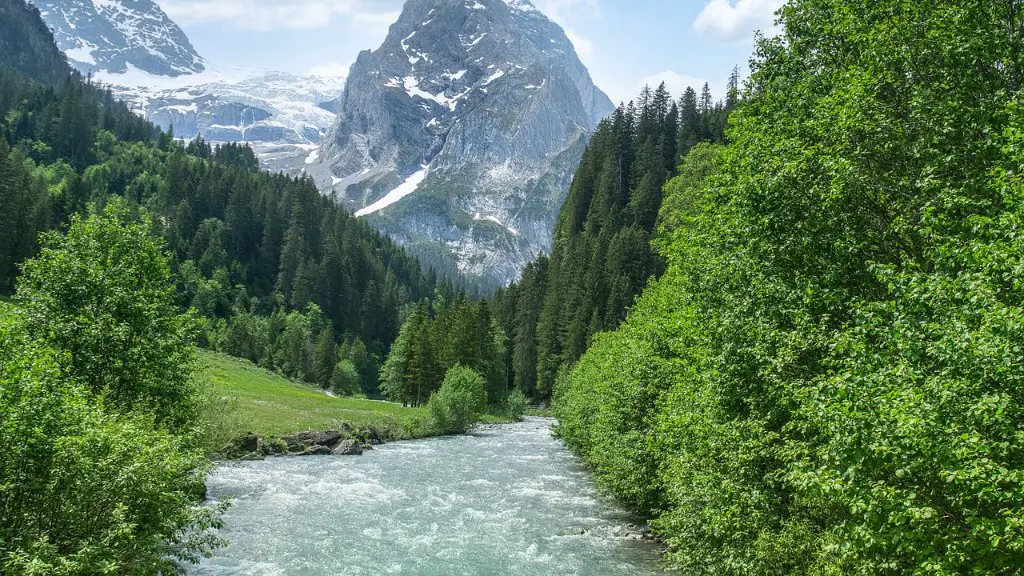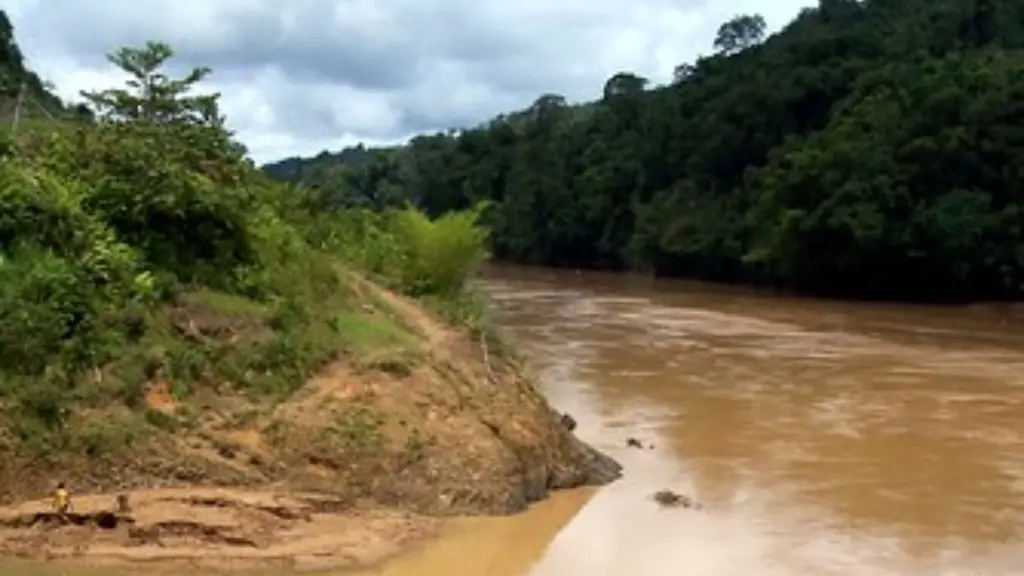Could the story of the Ganges, a river revered as a lifeline and a sacred entity, be any more fascinating than the vast body of water it finally surrenders to? The answer is a resounding no. The Ganges River is a geographical marvel, a spiritual cornerstone, and an environmental challenge, all rolled into one epic narrative. Understanding where this iconic river concludes its journey is key to appreciating its profound influence on the world. From the icy heights of the Himalayas to the teeming waters of the Indian Ocean, the Ganges weaves a story of life, faith, and the enduring power of nature.
The Ganges, one of the longest rivers on Earth, carves a path through diverse landscapes and sustains the lives of millions. It quenches the thirst of agriculture, offers a path for transportation, and is a revered site for countless religious rituals. Its final destination, a significant bay, plays a crucial role in the region's delicate ecosystem and economic well-being.
| Attribute | Details |
|---|---|
| Name | Ganges River |
| Origin | Gangotri Glacier, Uttarakhand, India |
| Length | Approximately 2,525 kilometers |
| States/Countries Flowing Through | India, Bangladesh |
| Major Cities Along the Course | Haridwar, Varanasi, Patna, Kolkata |
| Final Destination | Bay of Bengal |
| Religious Significance | Sacred to Hindus, associated with cleansing and salvation |
| Environmental Challenges | Pollution from industrial waste, agricultural runoff, and sewage |
| Conservation Efforts | Namami Gange Programme and other initiatives |
| Reference Link | Encyclopedia Britannica - Ganges River |
The origin of the Ganges River can be traced back to the imposing Gangotri Glacier nestled in the heart of the Indian Himalayas, a region of unparalleled natural splendor. This glacier, positioned at an elevation of approximately 3,892 meters, serves as the primary source for this iconic river. From this icy vantage point, the Ganges embarks on its descent, carving its way through the rugged and majestic terrain of the Himalayas.
- Unveiling Palm Beach Mugshots The Stories Behind The Photos
- From Escobars Shadow To Today The Sons Story Explained
As the river progresses on its journey, it gathers both strength and volume, aided by the contributions of numerous tributaries along its course. The confluence of the Alaknanda and Bhagirathi rivers marks a pivotal point, forming the main Ganges River. This convergence holds deep spiritual significance, celebrated in the rich tapestry of Hindu mythology.
The Ganges River's journey encompasses several states within India, including Uttarakhand, Uttar Pradesh, Bihar, and West Bengal. Moreover, it extends into Bangladesh, where it is known as the Padma River. Spanning approximately 2,525 kilometers, the Ganges rightfully claims its place among the longest rivers in the world, a testament to its enduring significance.
The path of the Ganges takes it through diverse landscapes, encompassing towering mountains, expansive plains, and the intricate beauty of deltas. This geographical diversity contributes to the rich biodiversity and agricultural productivity that characterizes the regions it flows through. The waters of the Ganges sustain millions of people, providing essential resources for irrigation, drinking water, and transportation.
- Discover Timeshealthmag Your Guide To A Healthier You
- Exploring Free Open Sexy Videos Your Guide To Safety Amp Info
The Ganges River's final destination is the Bay of Bengal, a vast expanse of water forming a part of the northeastern Indian Ocean. This bay borders India, Bangladesh, and Myanmar, making it a geographically significant feature in the region. The meeting of the Ganges with the Bay of Bengal gives rise to the Sundarbans Delta, renowned as one of the largest river deltas on the planet.
The Bay of Bengal is a vital center for trade, fishing, and transportation, playing an integral role in the regional economy. Its waters teem with marine life, supporting a diverse ecosystem that includes fish, dolphins, and sea turtles. The delta created by the Ganges River contributes to the fertility of the surrounding lands, establishing it as a crucial agricultural zone.
The Bay of Bengal, characterized by its vastness, covers an area of approximately 2,172,000 square kilometers. Its coastline stretches along India, Bangladesh, and Myanmar, fostering diverse ecosystems. The bay's weather patterns and ocean currents are influenced by the monsoon winds.
One of the most notable features of the Bay of Bengal is the Sundarbans Delta, formed by the confluence of the Ganges, Brahmaputra, and Meghna rivers. This delta is home to the Sundarbans mangrove forest, recognized as a UNESCO World Heritage Site, and celebrated for its rich biodiversity and unique ecosystem.
The ecosystem surrounding the Bay of Bengal is incredibly diverse, supporting a wide array of plant and animal species. The Sundarbans mangrove forest, situated at the mouth of the Ganges River, is home to the Bengal tiger, the saltwater crocodile, and numerous bird species. This forest plays a vital role in protecting the coastline from erosion and providing a habitat for marine life.
Furthermore, the Bay of Bengal acts as a crucial breeding ground for fish, shrimp, and other marine species. The region's fisheries significantly contribute to the economy of the surrounding countries, providing employment opportunities and ensuring food security for millions of people.
Conservation efforts are underway to protect the delicate ecosystem surrounding the Bay of Bengal. International organizations, governments, and local communities collaborate to protect the Sundarbans mangrove forest and promote sustainable fishing practices. These initiatives aim to preserve the region's biodiversity and ensure its long-term sustainability.
The Ganges River is deeply interwoven with the history of India, shaping its culture, economy, and political landscape for centuries. It has served as a wellspring of inspiration for poets, artists, and philosophers, becoming a vital trade route, connecting various regions and facilitating the exchange of goods and ideas.
In ancient times, the Ganges River was considered sacred by the Hindu civilization. It was believed to be a goddess, and its waters were thought to have purifying powers. The river continues to hold immense religious significance, with millions of pilgrims visiting its banks to perform rituals and seek spiritual enlightenment.
The Ganges River is deeply connected to Hinduism, serving as a sacred site for millions of devotees. It is believed that bathing in the river's waters can cleanse one of sins and bring salvation. The river is also associated with various Hindu deities, including Goddess Ganga, who is said to have descended from heaven to earth.
Major Hindu festivals, such as Kumbh Mela and Ganga Dussehra, are celebrated along the banks of the Ganges River. These festivals draw millions of pilgrims from all over the world, creating a vibrant cultural tapestry. The river's spiritual significance extends beyond Hinduism, influencing the beliefs and practices of other religions in the region.
Despite its cultural and religious significance, the Ganges River faces significant pollution challenges. Industrial waste, agricultural runoff, and untreated sewage are some of the major pollutants affecting the river's water quality. This pollution poses a threat to the health of the river's ecosystem and the people who depend on it for their livelihoods.
Government agencies and non-profit organizations are working to address these challenges by implementing pollution control measures and promoting awareness among local communities. Initiatives such as the Namami Gange Programme aim to clean and rejuvenate the river, ensuring its sustainability for future generations.
Conservation efforts for the Ganges River are focused on restoring its natural flow, improving water quality, and preserving its biodiversity. Various projects are underway to achieve these goals, involving collaboration between governments, scientists, and local communities. These efforts include reforestation, wetland restoration, and the promotion of sustainable practices.
International organizations such as the World Wildlife Fund (WWF) and the United Nations Development Programme (UNDP) are supporting these conservation initiatives. By addressing the root causes of pollution and habitat destruction, these efforts aim to ensure the long-term health and vitality of the Ganges River.
Several conservation success stories demonstrate the positive impact of these efforts. For example, the restoration of certain river stretches has led to the return of endangered species, such as the Ganges River dolphin. These achievements highlight the importance of continued conservation work and the potential for positive change.
- Juan Pablo Escobar From Cartel Heir To Advocate The Untold Story
- Cheryls Diner A Local Favorite You Need To Visit

